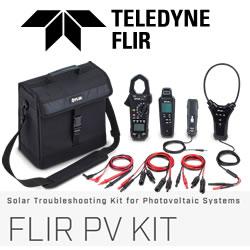For most commercial buildings, energy is the single largest operating expense, most of which comes in the form of electricity. That being the case, the cost of utility-supplied power is of major concern to property managers searching for ways to lower costs.
 What Is The Average Utility Cost Per Square Foot Of Commercial Property?
What Is The Average Utility Cost Per Square Foot Of Commercial Property?

Michael Davies | Iota Communications
For most commercial buildings, energy is the single largest operating expense, most of which comes in the form of electricity. That being the case, the cost of utility-supplied power is of major concern to property managers searching for ways to lower costs. But controlling and cutting energy costs doesn’t happen overnight—it’s part of a larger educational process that starts with learning more about how you’re being billed, your industry’s energy profile, and your building’s specific energy dynamic.
To that end, a common question is this: What is the average utility cost per square foot for commercial property? We’ll answer that—and provide some related information on how industry energy profiles can be useful—in the sections that follow.
What is the average utility cost per square foot for commercial property?
The answer: The average cost of utilities for commercial buildings is $2.10 per square foot.
Other interesting facts:
-
The total electricity expense for private-sector office buildings in 2016 was $1.69 per square foot.
-
According to the 2012 Commercial Building Energy Consumption Survey (which was being updated as of 2018), commercial buildings spend $1.44 per square foot per year on electricity and $0.30 per square foot per year on natural gas.
-
In 2018, refrigeration was the largest single use of electricity in the commercial sector, accounting for 13.9% of spending. For U.S. manufacturers, machine drives (motors) were the largest use of electricity.
-
According to the U.S. Department of Energy, the average number of kilowatt hours per square foot for a commercial building is approximately 22.5. (You can see the breakdown on how energy is used here.) A food service facility consumes approximately 56 kWh/square foot, a retail mall 23, a public assembly building 15, and a warehouse 9.
-
Looking ahead to 2050, lighting is expected to show the greatest reduction in electricity intensity (54%) thanks to more commercial buildings replacing incandescent bulbs with LED bulbs and compact fluorescent lamps.
-
On-site electricity generation via solar is expected to increase by an average of 5% per year for commercial buildings.
-
The three states with the highest commercial utility rates are Hawaii, California, and Alaska.
What factors contribute to the cost of energy?
The cost of electricity is based on a number of variables, including the time of day you’re using it, the season of the year (summer rates can be higher than winter rates due to higher energy demand), and where you live.
In combination with the factors listed above, you are billed based on your energy consumption and demand. Different industries have different requirements for energy use—for example, some buildings, like hospitals, operate 24/7, and food service facilities must power refrigeration units constantly. Other facilities, like schools, are open during limited hours and even close during the summer. Your energy demand is also a big factor in what you pay: Your maximum hourly power requirement over a billing cycle forms the basis of a utility’s demand charge, and comprises a significant portion of your bill.
How You Can Use Industry Energy Data To Reduce Your Operating Expenses
There are mountains of data related to industry energy use—use it to your advantage by benchmarking.
Benchmarking is the process of measuring your building’s energy performance against that of other buildings, with an eye toward making improvements. The U.S. Department of Energy, the U.S. Energy Information Administration, Building Managers & Owners Association, and other organizations regularly conduct studies and surveys regarding energy use; they provide numerous metrics that paint a picture of energy-related spending and consuming across industries.
You also need your own building data for benchmarking. Your past utility bills hold key spending data, and remote monitoring of your building operations allows you to gather current consumption data specific to your building. Over a period of time, you’ll gain a better understanding of what activities are associated with your energy usage, including what you’re spending the most money on.
Benchmarking is a valuable exercise that helps you discover what others in your industry are doing differently and what you can do better. Once you’ve identified underperforming areas in your building, you can then develop an action plan to address them, producing energy savings as a result.
Want to get started benchmarking?
Iota can help you gather in-depth data about your building operations with our remote monitoring service. Placed throughout your facility, their IoT sensors measure all aspects of energy consumption, for both building operations (lighting, HVAC, ventilation, etc.) and individual machinery. They can also help you analyze the data you collect and formulate strategies to optimize energy efficiency. They’ve helped numerous Fortune 100 clients save money by implementing smarter energy practices—they can do the same for you. To learn more, visit Iota’s website or contact them.
The content & opinions in this article are the author’s and do not necessarily represent the views of AltEnergyMag
Comments (0)
This post does not have any comments. Be the first to leave a comment below.
Featured Product

